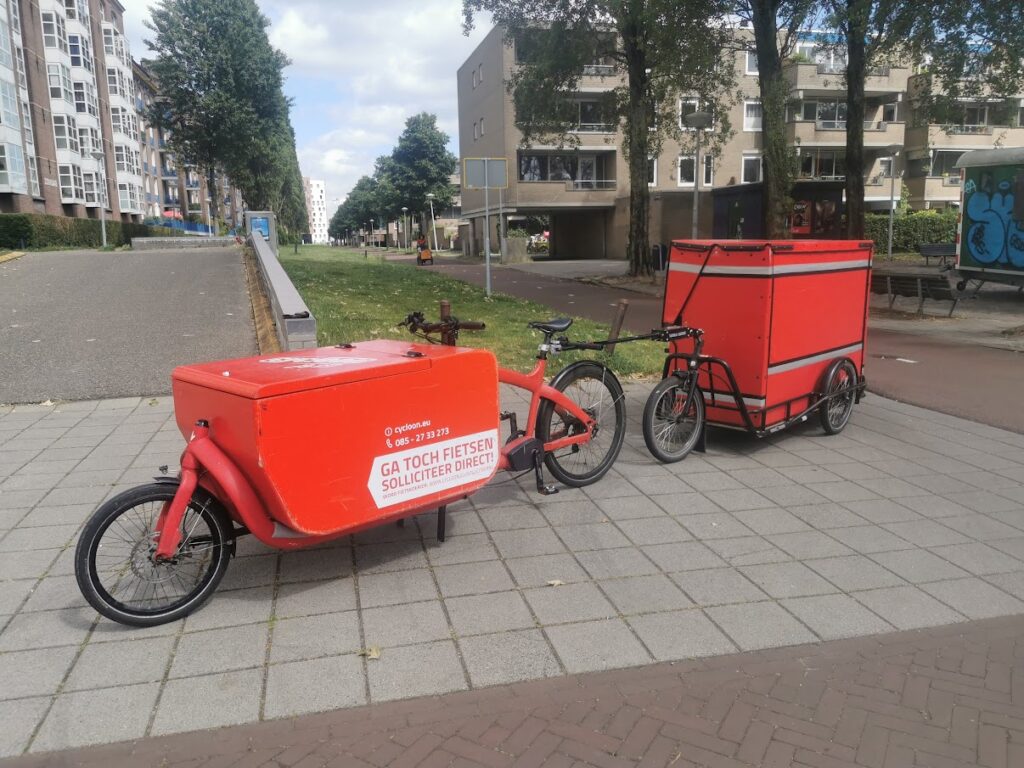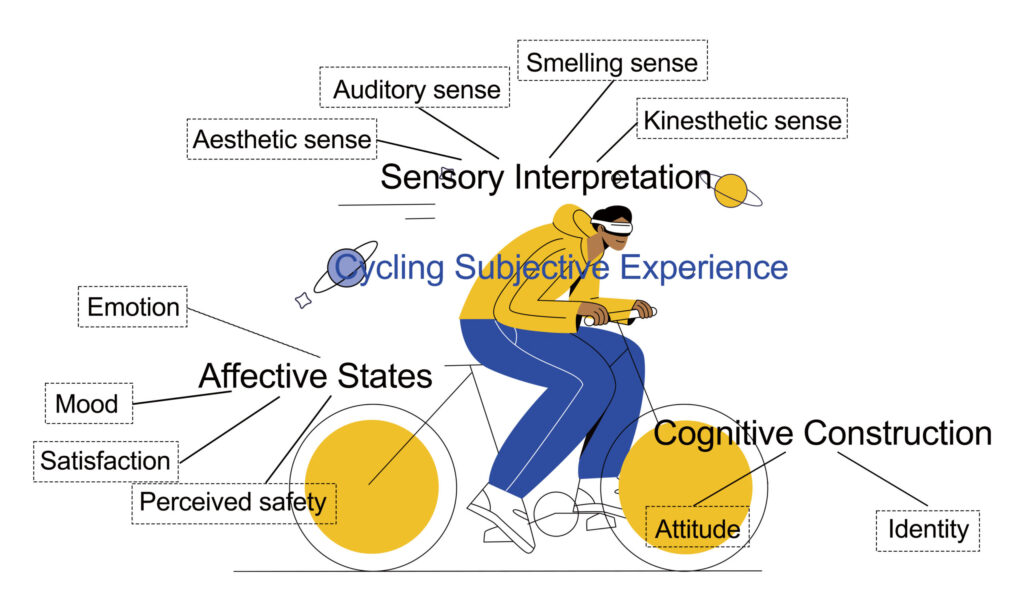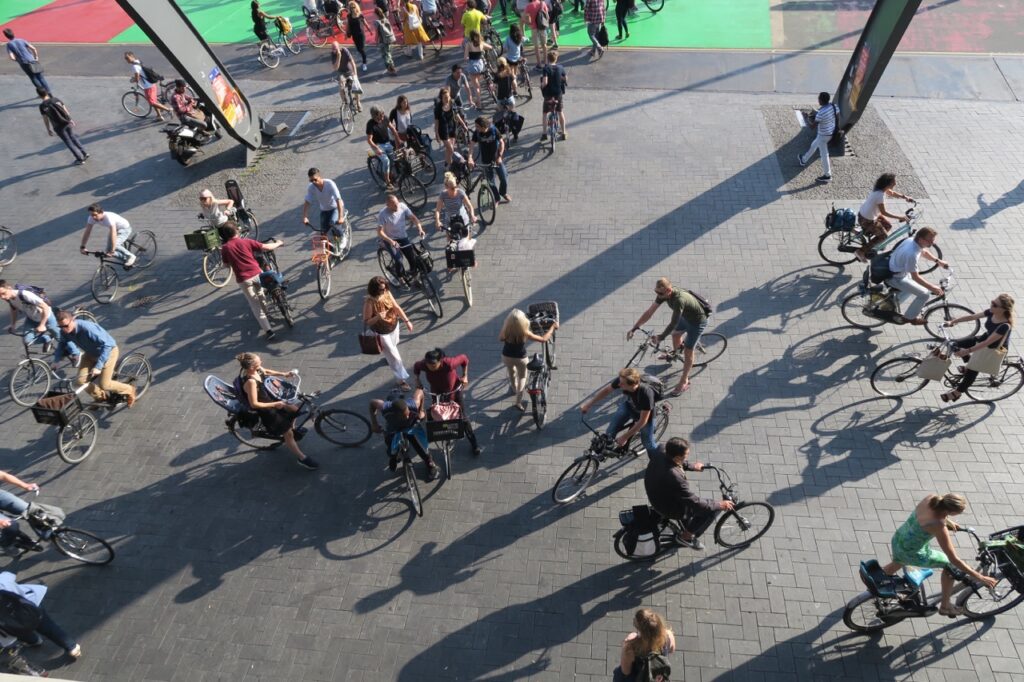In their recently published research article, Jarvis Suslowicz and Marco te Brömmelstroet approach developments in bicycle courier mobility in Amsterdam and Oslo. The research explores change in the mobile geographies of bicycle courier work as a result of platform economy influences, with a focus on how agency of movement characteristic of messenger culture is maintained or altered through the use of algorithmic routing and management of the delivery process. Here, you can read a summary of the research. The research is summarized here.
In recent years, bicycle logistics has come onto the planning agenda as a following of new interest in active travel – walking, wheeling and cycling – as a central travel mode in the sustainable, liveable cities we hope to build and maintain. Bicycle couriering, the act of moving goods relatively short distances from A-to-B within cities, is certainly not a new concept but has undergone multiple pivotal adaptations in response to economic and technological developments over the past century.
Developments in Courier Mobilities
Towards the end of the last millennium, bicycle messengers appeared in global financial centers, deriving their value from the ability to transport relatively small but valuable goods – blueprints, documents, artworks – while bypassing the congestion that automobile transporters would find themselves a part of. Through a specific mobile skillset often involving illegal and visibly daring movements in and around the streetscape, always looking for seemingly invisible gaps to exploit to both make a delivery on time and derive enjoyment from the job.
Since the platform economy turned, bike couriers have seen renewed interest from the perspective of precarity: whereby couriers, most often working in food delivery, work on paper as self-employed, but remain subject to algorithmic control by delivery apps (Popan, 2021). This paper takes an explicitly mobilities focus, asking how the mobile geographies of working cyclists have changed with the influx of app-based technology for organization and navigation.
Findings
The article mobilises two case studies: one of Amsterdam, a high-cycling city with a long-established norm for transporting goods via bicycle; the other Oslo, a low-cycling context hampered by physical limitations but more recent practice interest in increasing the bicycle mode share, including in logistics (Ørvig & Eidhammer, 2019). The two cases, when viewed together, provide a wide overview of possible norms and challenges for commercial cyclists to work with.
Findings from participatory mapping point to a shift in the overall urban geography of bicycle courier work out to the inner-suburbs, with a shift of consumer base from business-to-business (B2B) to business-to-customer (B2C) deliveries – namely on demand restaurant orders to residential addresses. Couriers often cover large areas during a shift, necessitating certain tactics to move efficiently but safely in complex street spaces.

In interviews with couriers in Oslo, they pointed often to not only spatial tactics common amongst messengers, but also means of digitally manipulating lapses in algorithmic supervision to get more favourable deliveries. In Amsterdam, where electric cargo bikes are common in delivery work, the size and weight of the vehicle and load necessitates thinking creatively with how space is occupied both while moving and at rest. In both cities, failures in the digital representations of space in navigation apps make them unreliable at best, meaning couriers frequently fall back on their own mental maps developed through experience.
Implications
The article raises several considerations for planning cycling cities with the user experiences of logistics workers in mind. Electric-assist motors have been a valuable tool in supporting the cycling revolution, lowering the physical barrier for entry into the mode even in cities with challenging topography like Oslo. In courier work, they allow riders to carry larger and heavier loads than ever before, permitting a real challenge to a logistics norm dominated by trucks and lorries. This technology has rapidly developed and become more accessible, while the built environment lags behind.

(photo by Jarvis Suslowicz)
Insight into mobility norms associated with platform economy, or at the very least digitally aided bicycle couriers can be used to direct development of new norms for active travel provision. Particularly, the sizes and weights of new cargo bikes mean that the needs of these riders can differ radically from the standard cyclist. Like any vehicle, bicycles need space to park while stopped briefly during deliveries that are appropriate in size.
In movement, wider turning radii may be needed for larger bike-trailer systems, having implications for existing best-practice standards of protected junctions. Other spatial requirements have relevance for logistics more generally, such as the reclassification of parking spaces to dynamic loading bays at strategic points, already occurring in many cities like Amsterdam.
Ultimately, this is a field which is constantly shifting. Since writing, rider management of Foodora workers in Norway has been further removed from the context of practice, from Germany to South Asia. Other companies have shifted focus, removing themselves from markets when national legislation catches up to protect workers. It’s unclear whether the platform economy in its current state will survive, but the technology is here to stay.
References:
Popan, C. (2021). Embodied Precariat and Digital Control in the “Gig Economy”: The Mobile Labor of Food Delivery Workers. Journal of Urban Technology, 1–20.
Ørvig, T. & Eidhammer, O. (2019). Evaluation of Oslo City Hub. The planning and establishment of a depot for transshipment of goods, TØI report 1730/2019.



